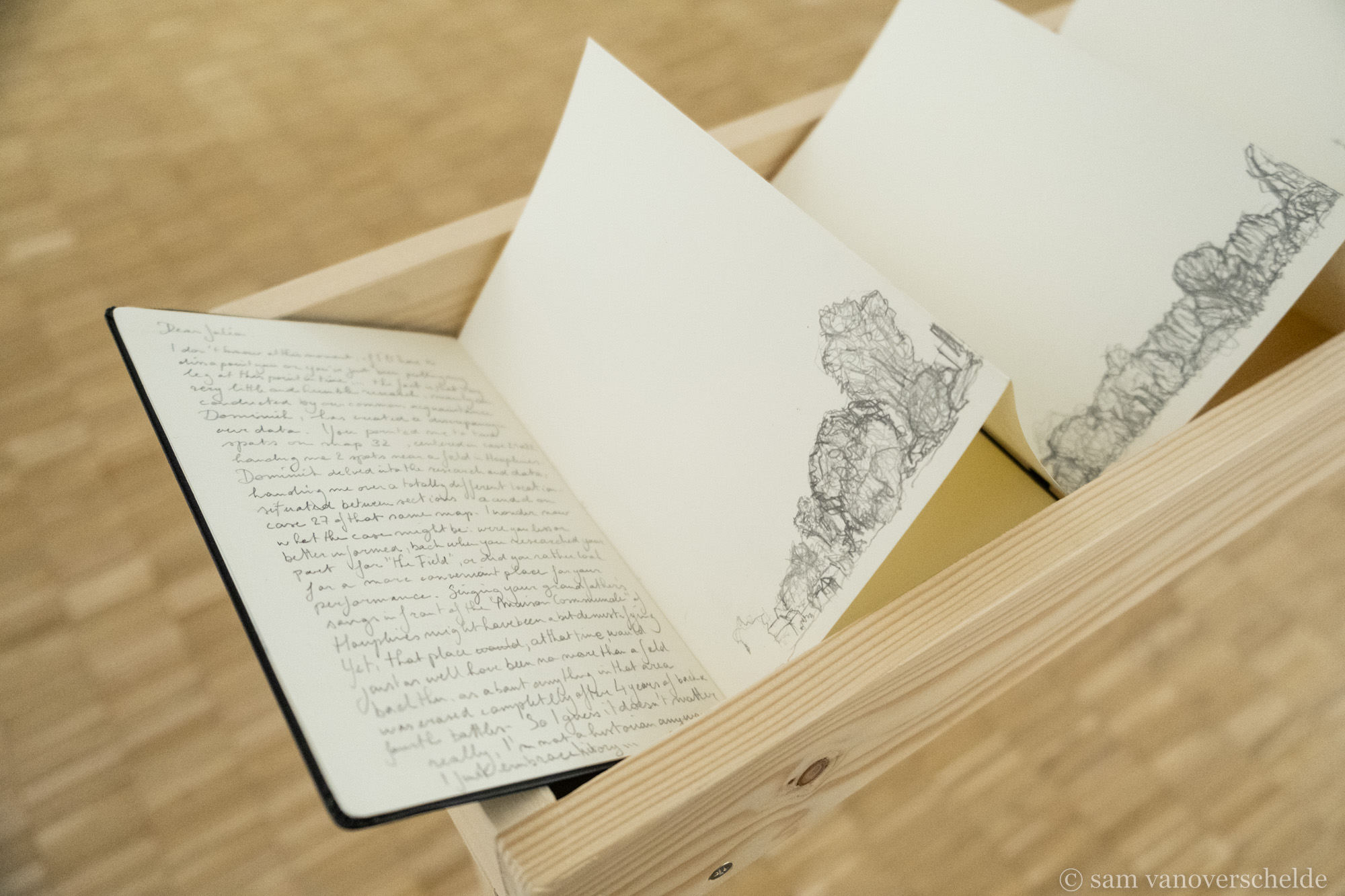An exhibition of the Fictive Archive Investigations group
Back in the days when covid locked down our world, I answered a call from Claire Ducène who was looking for artists-researchers working in the field of history and archives, to start up a group project reflecting about the kind of work we did. After an extensive period of getting to know each other’s work through regular online presentations and conversations, we got an opportunity to create and present together at the Brussels institute for artistic research ISELP. With a group exhibition ahead of us, we started forging alliances within our group. In the summer of ’22 a residency at ISELP and La Métive brought most of us all physically together. The results of our individual and group efforts were presented at ISELP during a group exhibition that opened on January 25th 2023.
Here are some pictures of the exhibition, (read further underneath)
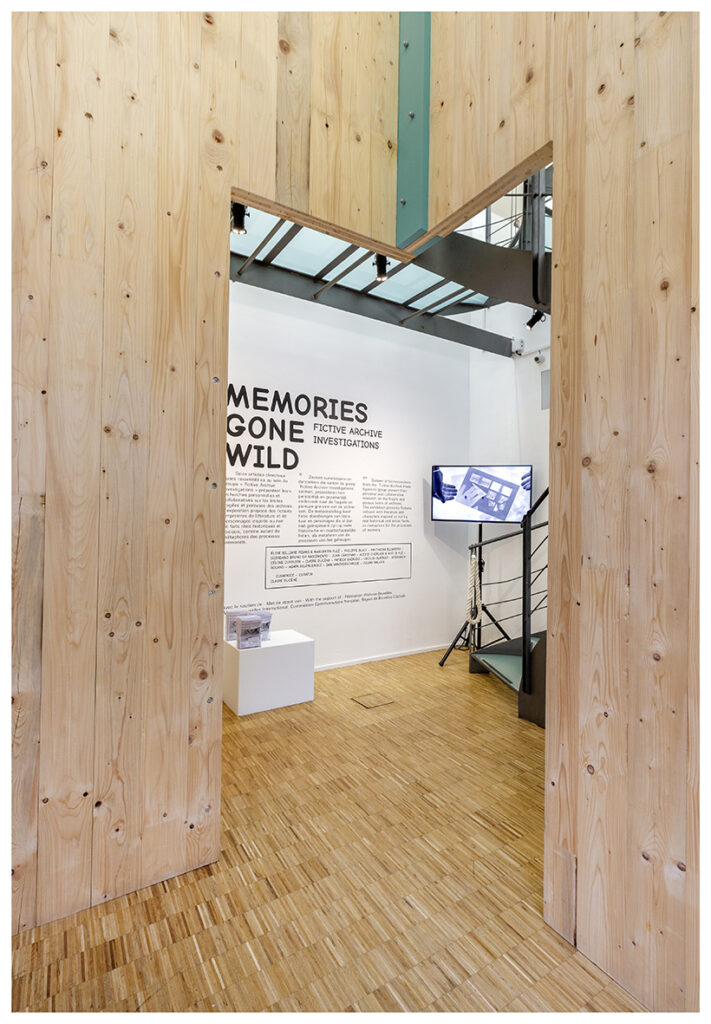
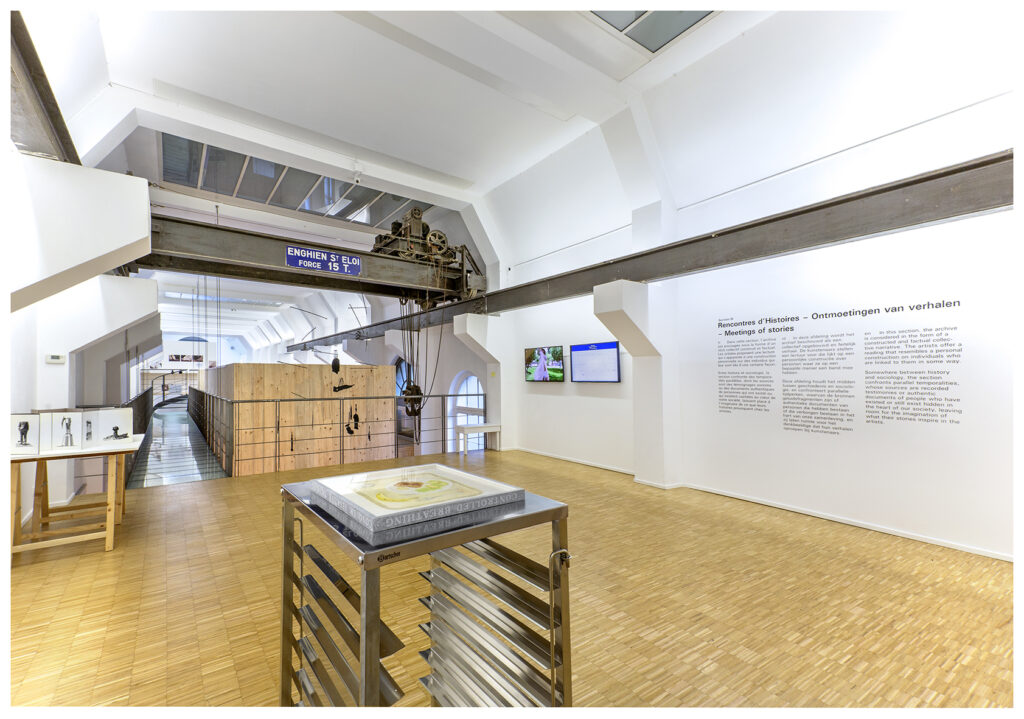
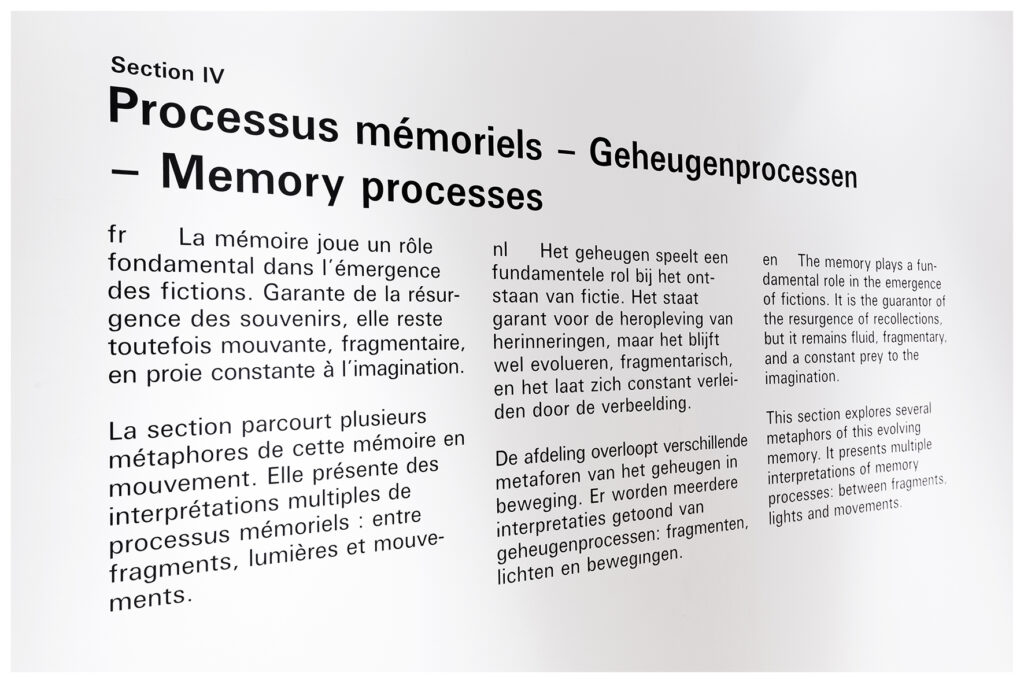
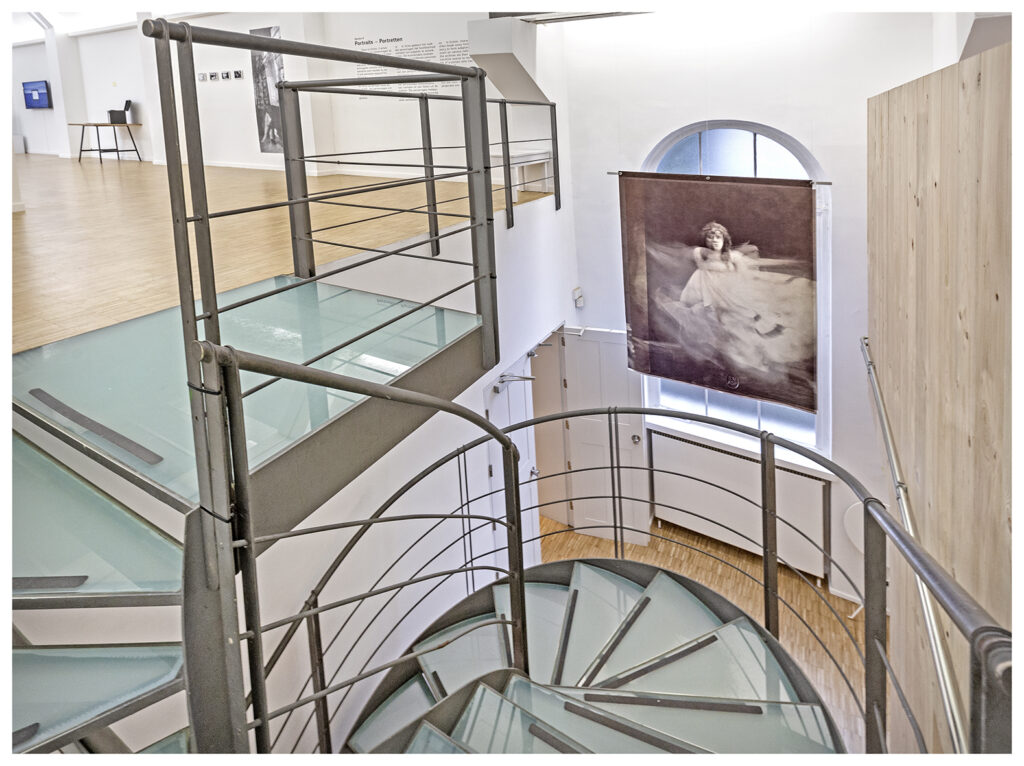
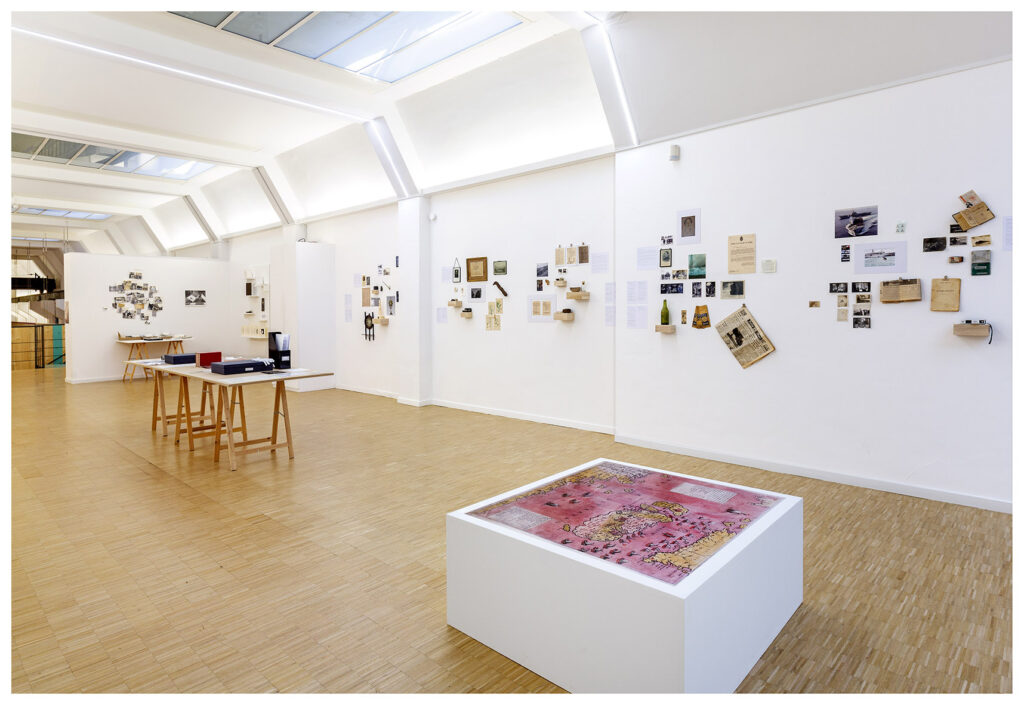
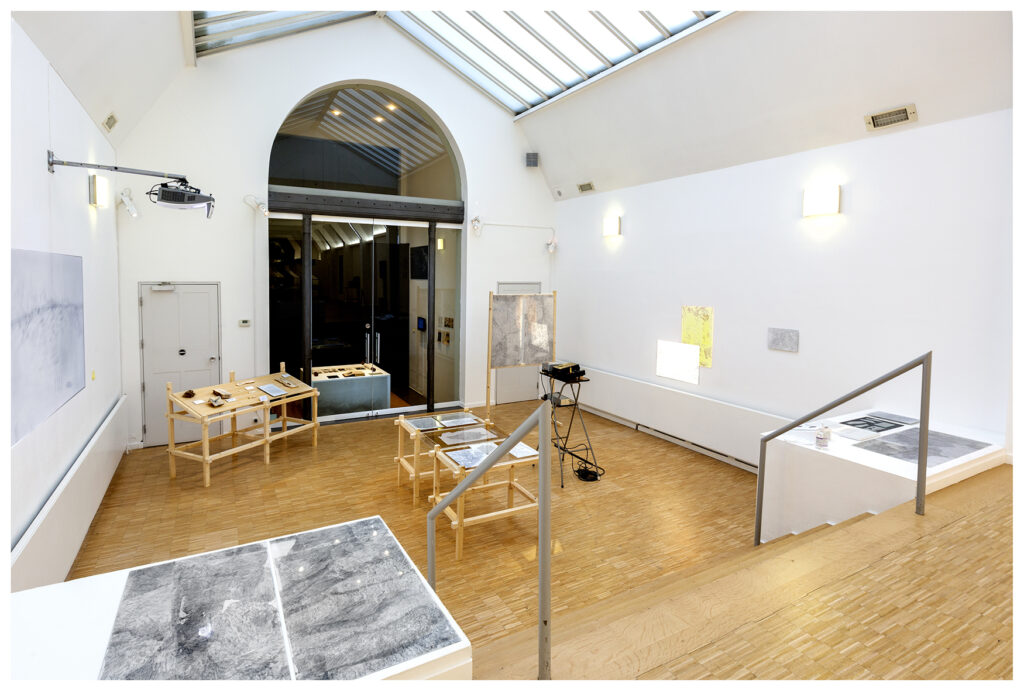
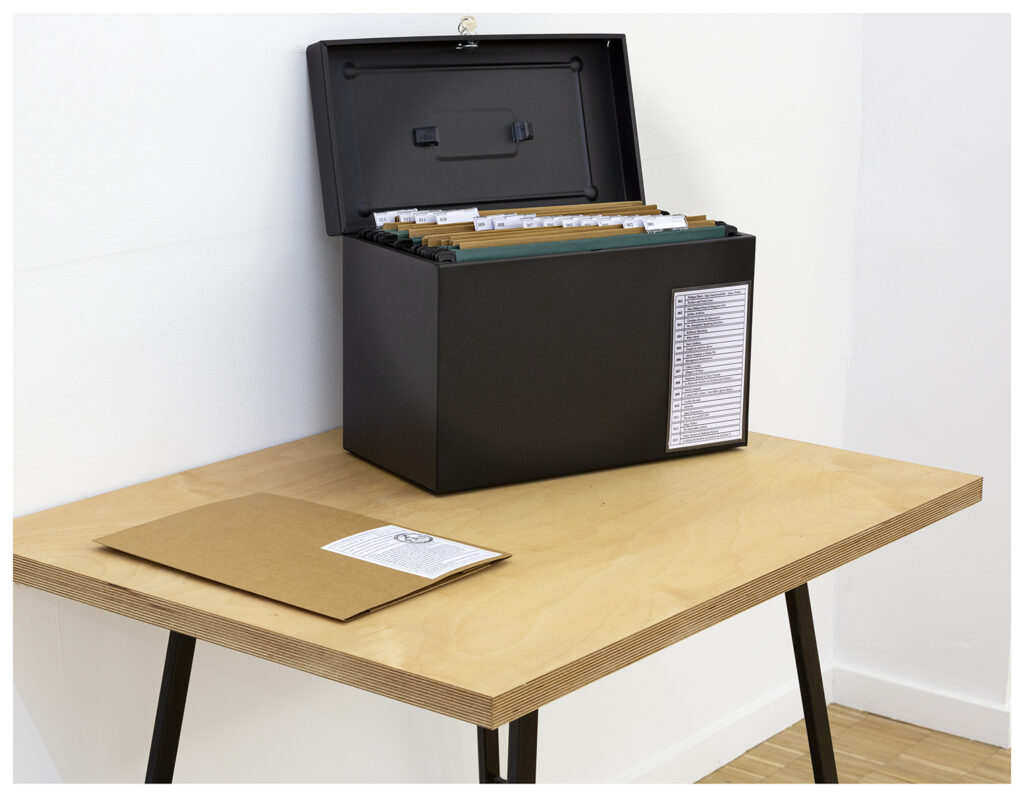
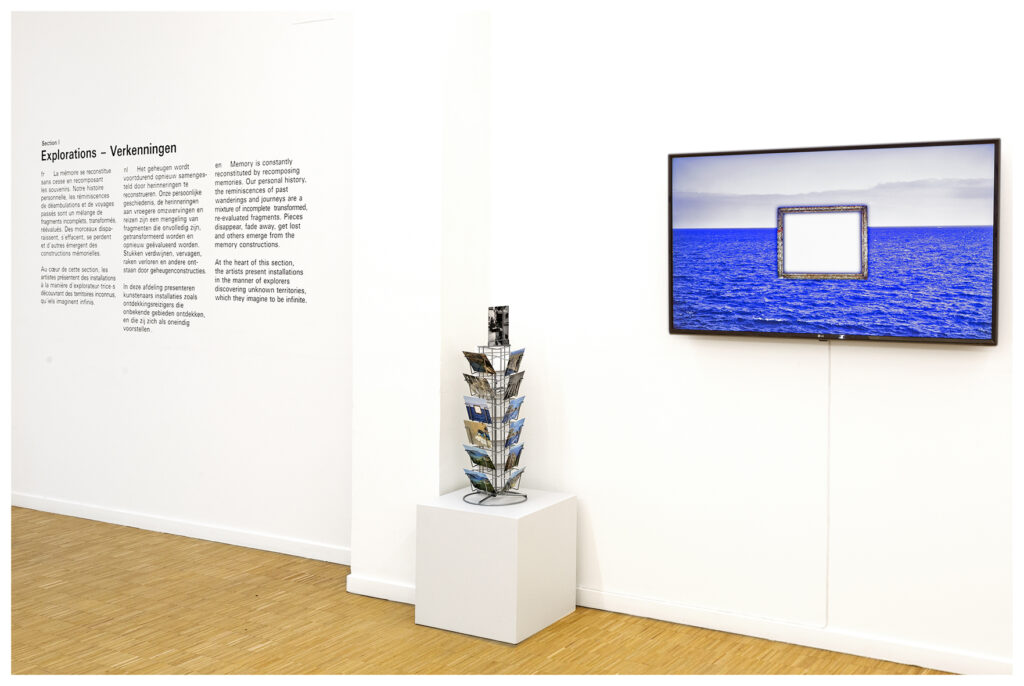
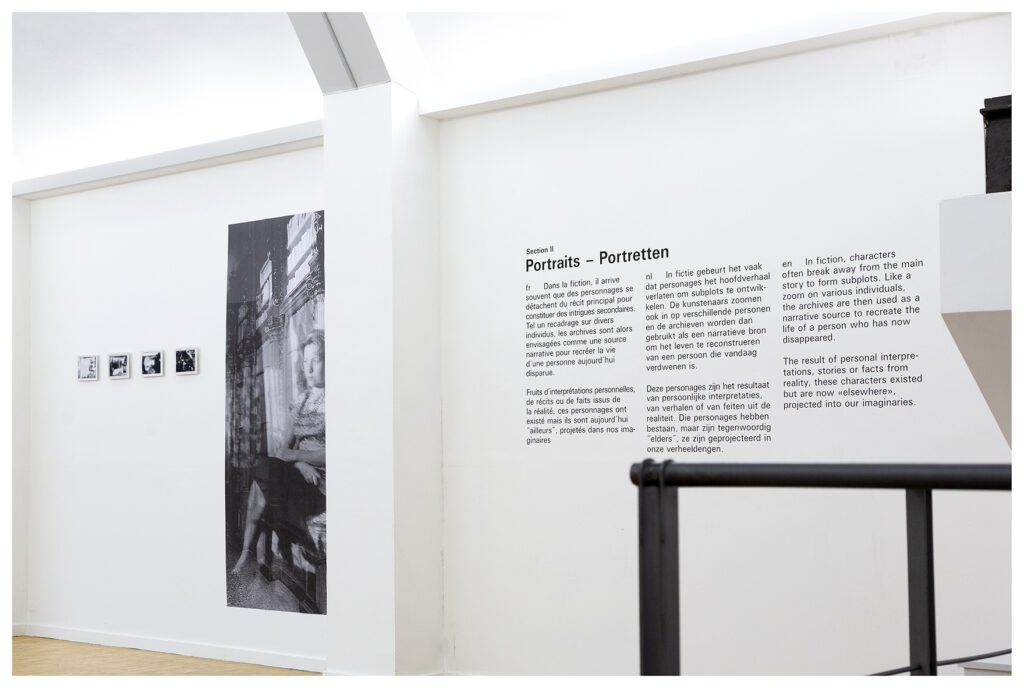
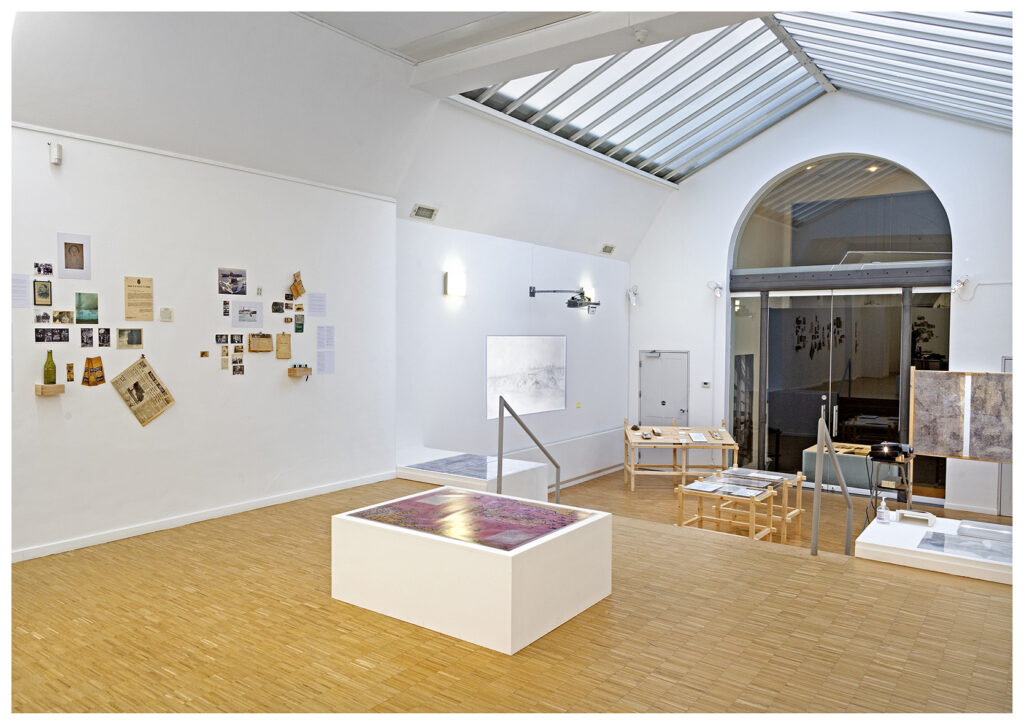
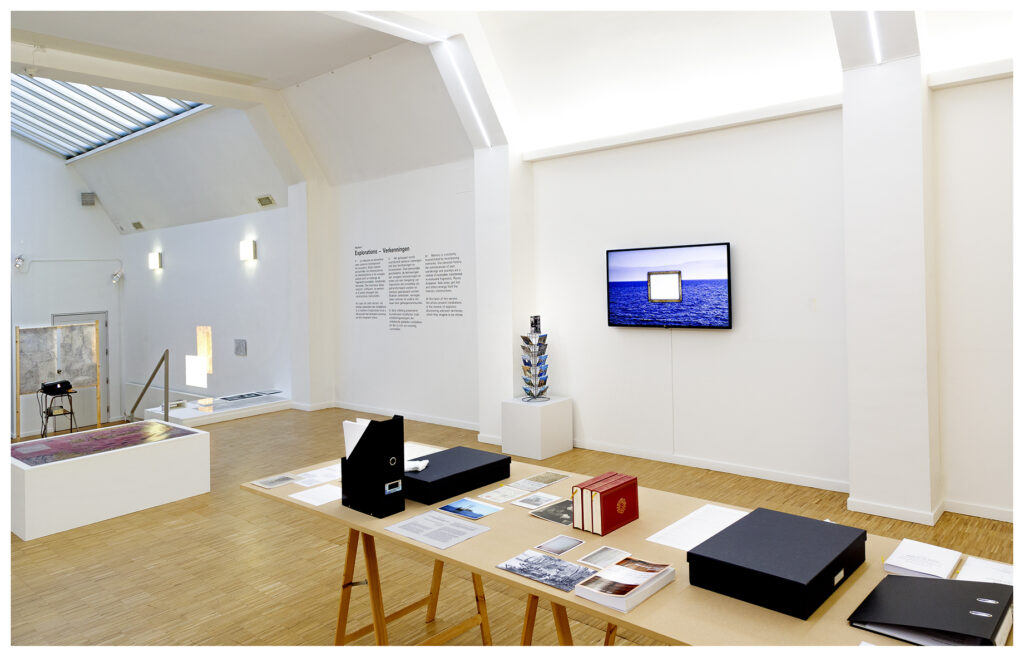
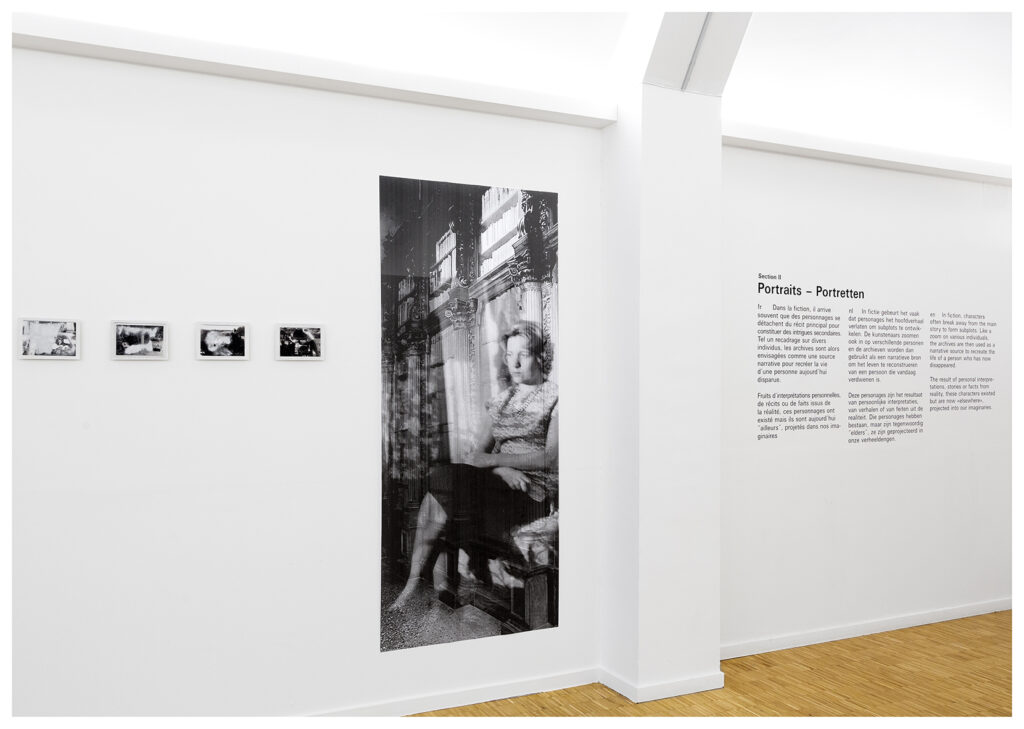
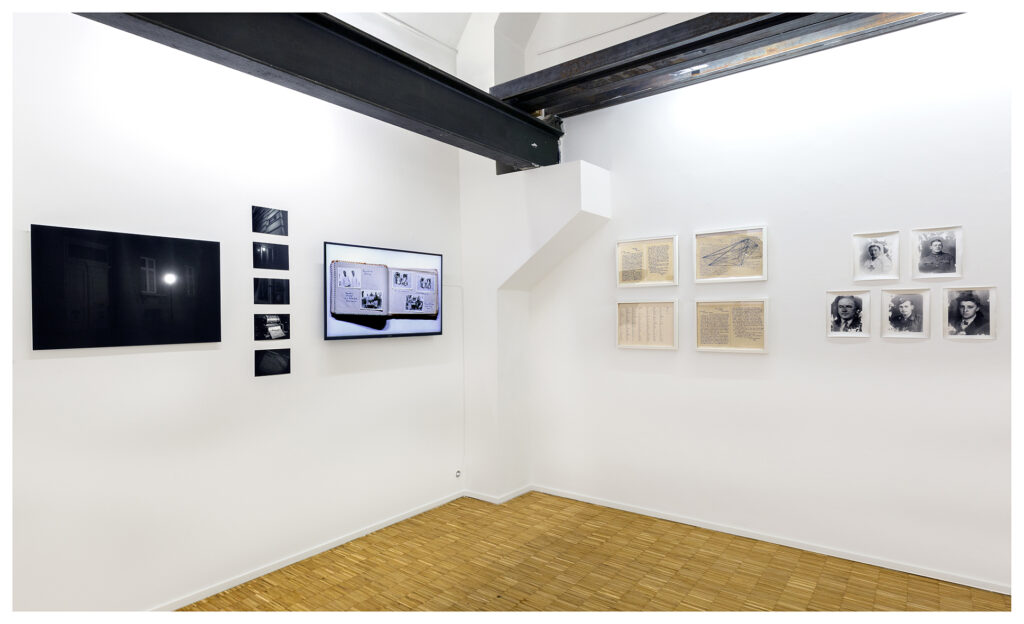
Pretty quickly in our presentation and research stage, I hooked up with Julian Walker and Philippe Beck connecting through our family histories that all had to do with the two world wars from last century. Julians grandfather Frederick was left with permanent damage to his eyesight due to a gas attack he suffered in a field in Houplines, near Armentière on 9 october 1918. Julian had previously investigated the matter, had documented the place and performed one of the songs of his grandfather. Philippe’s ancestors were situated in East Belgium, the German speaking part that was annexed to Belgium after WWI and reclaimed by Germany in WWII. His great-grandfather had left the area at the beginning of the war and worked for the german occupied government in Brussels, but also joined a resistance group. He had printed their pamphlets in his office. Meanwhile in Eupen, his grandfather and grandmother were enlisted in the German Wehrmacht and the labour service for the war effort. Another grandfather of underwent the same scenario but quickly deserted and joined the resistance too.
For my part, instead of diving into the Joe English history again, I presented the group the story and archival pieces of Molly English, which I explored earlier in ‘the outs and abouts of Molly English’.
We embarked on a common project, Borderlines and Frontlines, handing over the archival pieces and information to the others so each could work on a personal approach with other people’s materials.
My goal was to embark on a pilgrimage to the places where they had lived their ordeal, document that as precisely as possible and create new work from my personal perspective. I received a fragment of Frederick Walker’s war diary, some regiment information and two possible locations for the gas attack in Houplines as well as several addresses in Brussels and Eupen from the Beck family. The latter resulted in a series of pictures that accompanies Julians take on the material that Philippe handed him.
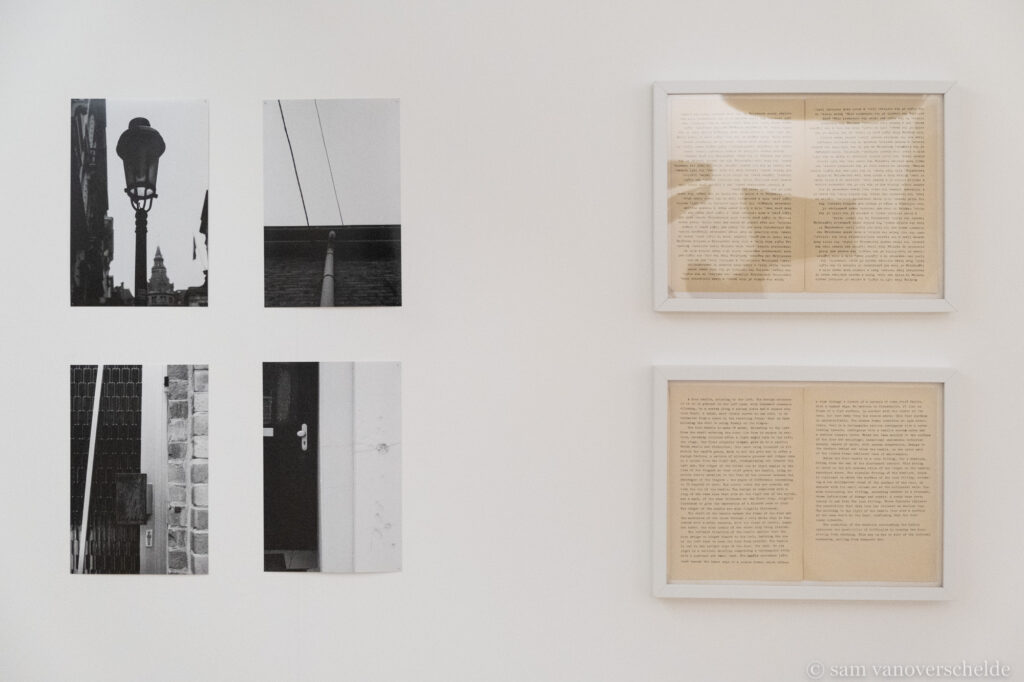
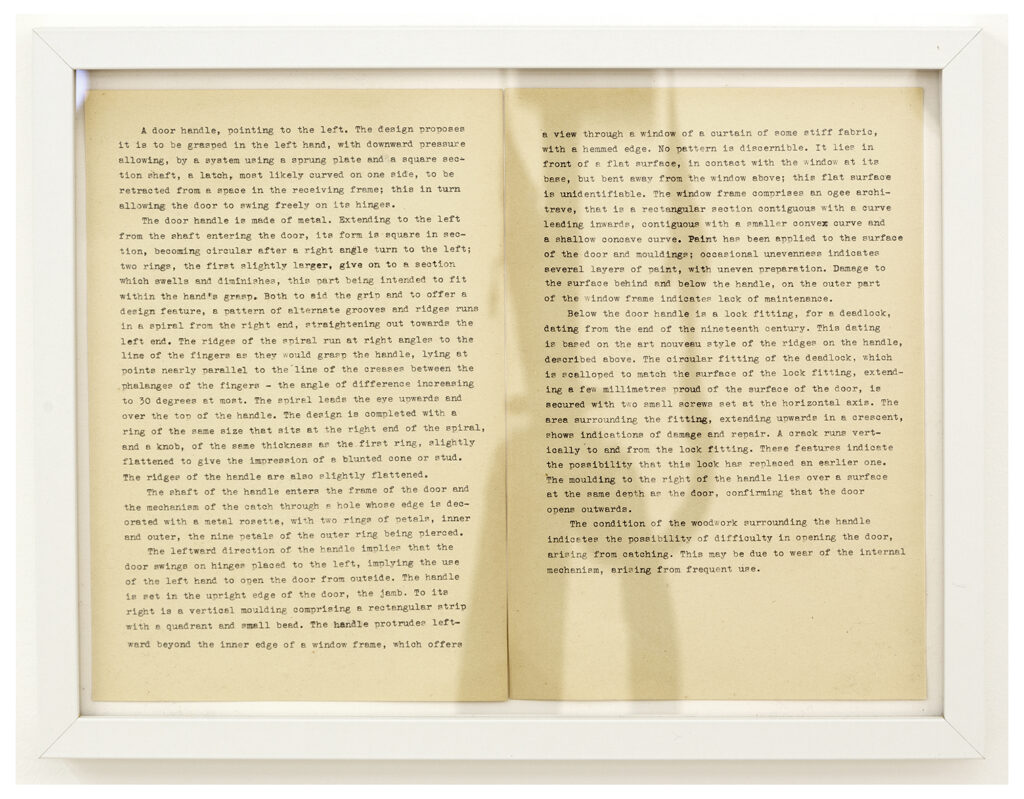
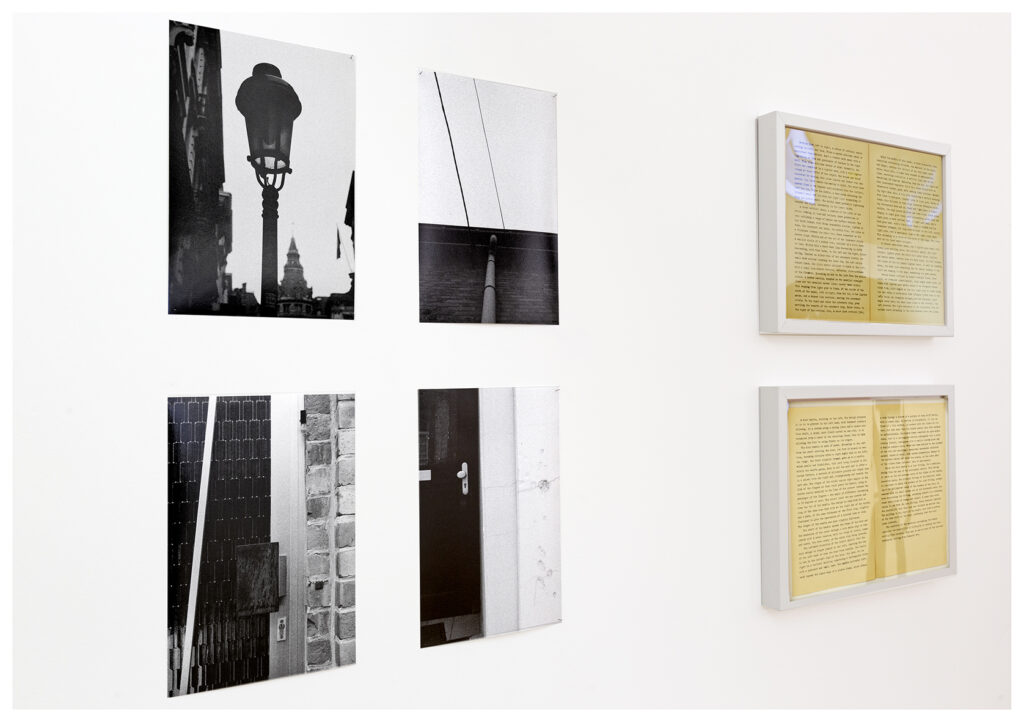
With the help of the Flanders Fields Museum, I got hold of more detailed information that could pinpoint the exact location of the gas attack. I spent a week in the area, figuring out the possible routes Frederick’s regiment must have followed and went on numerous nightly trips filming those spots. On the 9th of october 2022, exactly 104 years later, I was in the field where it all happened. Well, actually I documented the three locations: the two Julian had pointed me too and the one I discovered. I made ‘reconnaissance’ drawings of those places as they are now, just like my own great-grandfather Joe had done during his time when he was on the lookout with his friend Samuel. This resulted in an accordion fold sketchbook with three landscapes and with the nightly videofootage, i made a short film retracing the exact route I had finally discovered.
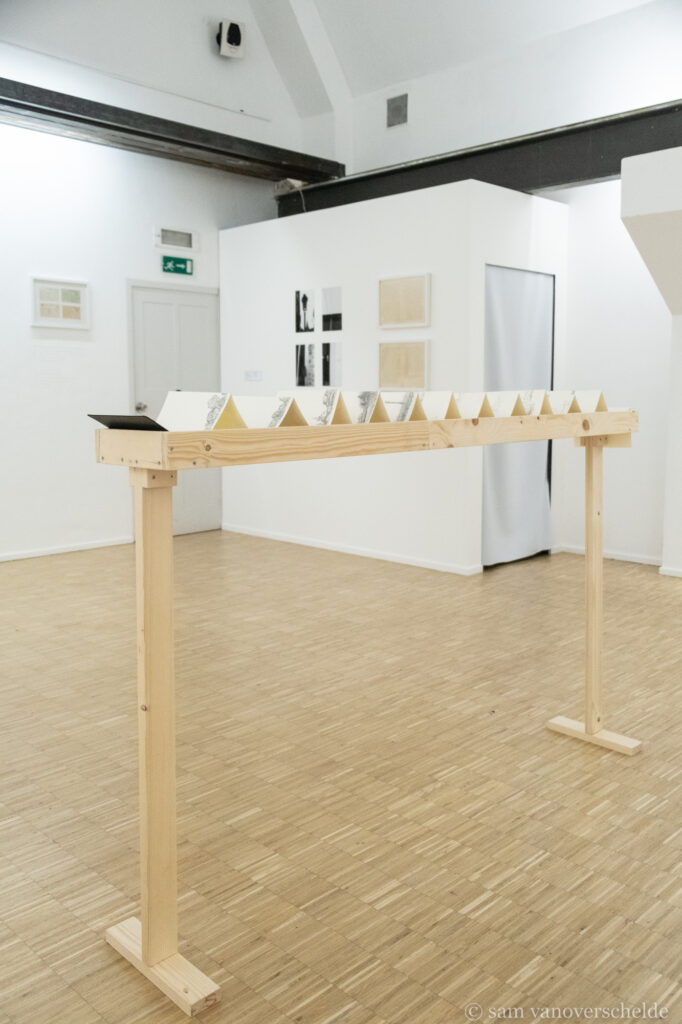
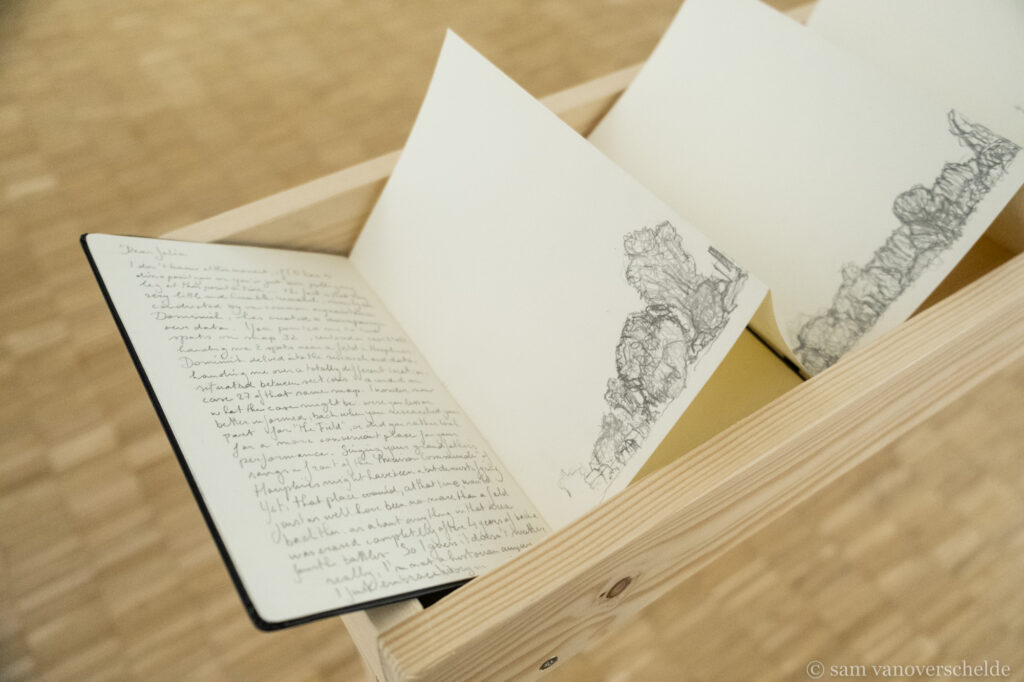
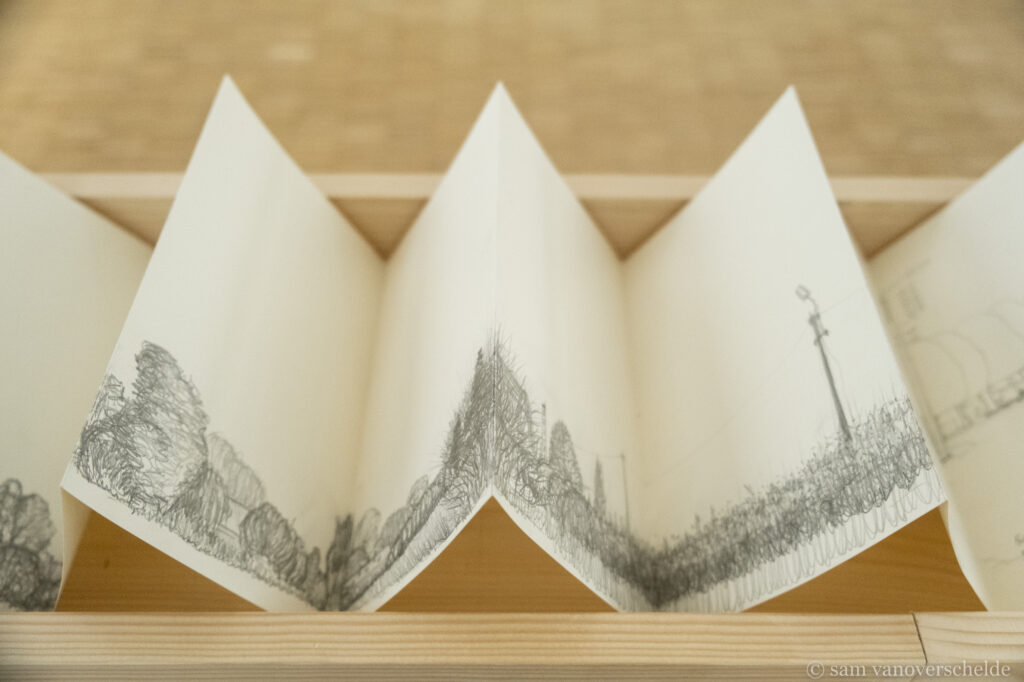
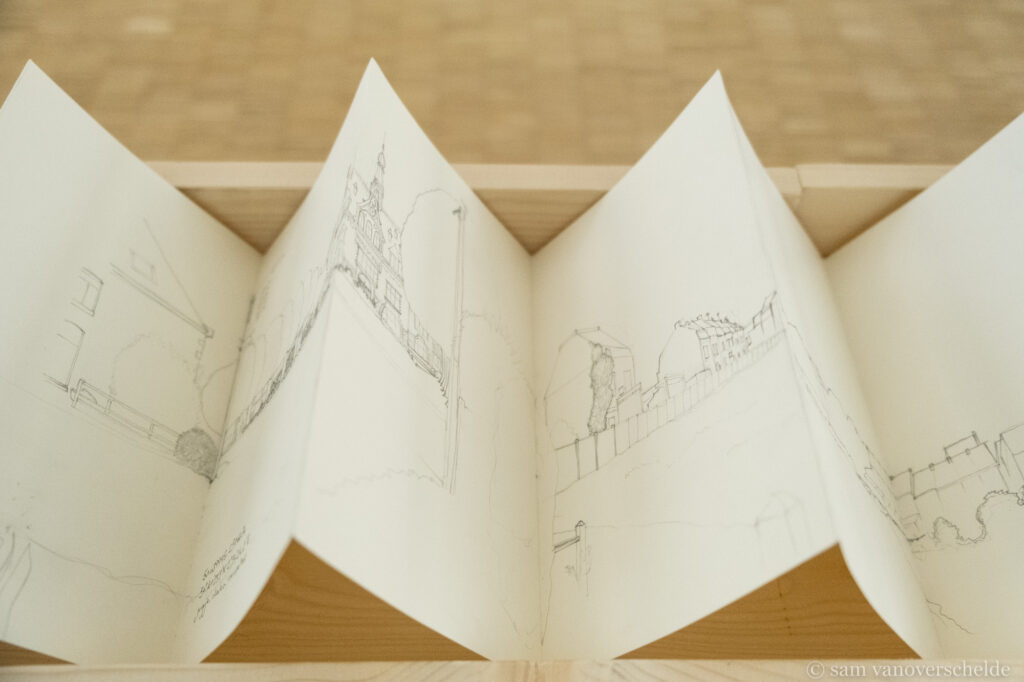
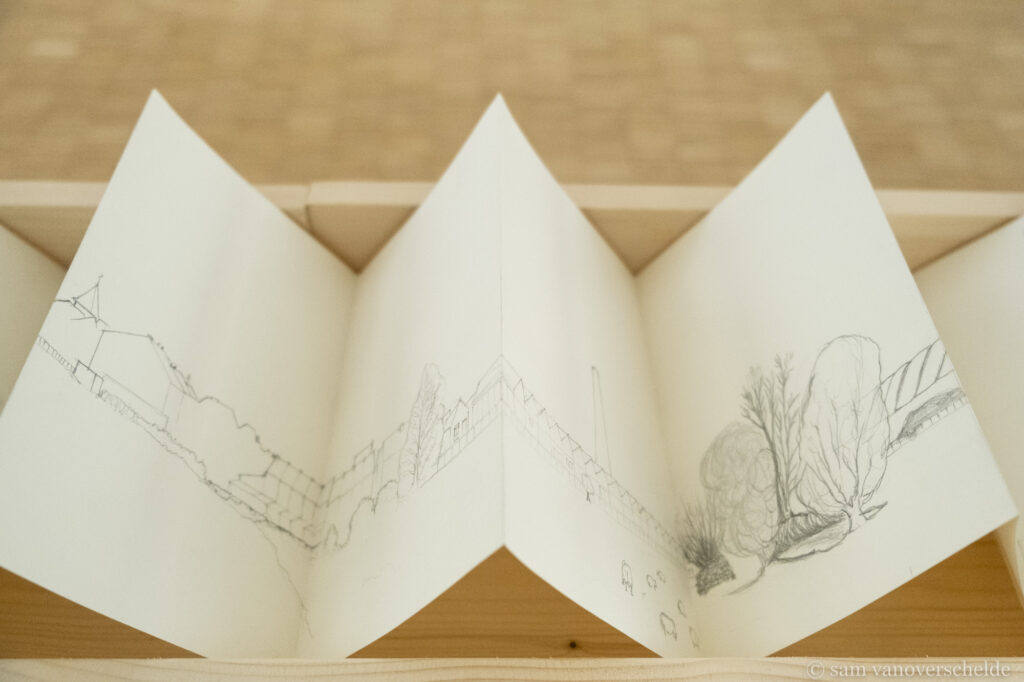
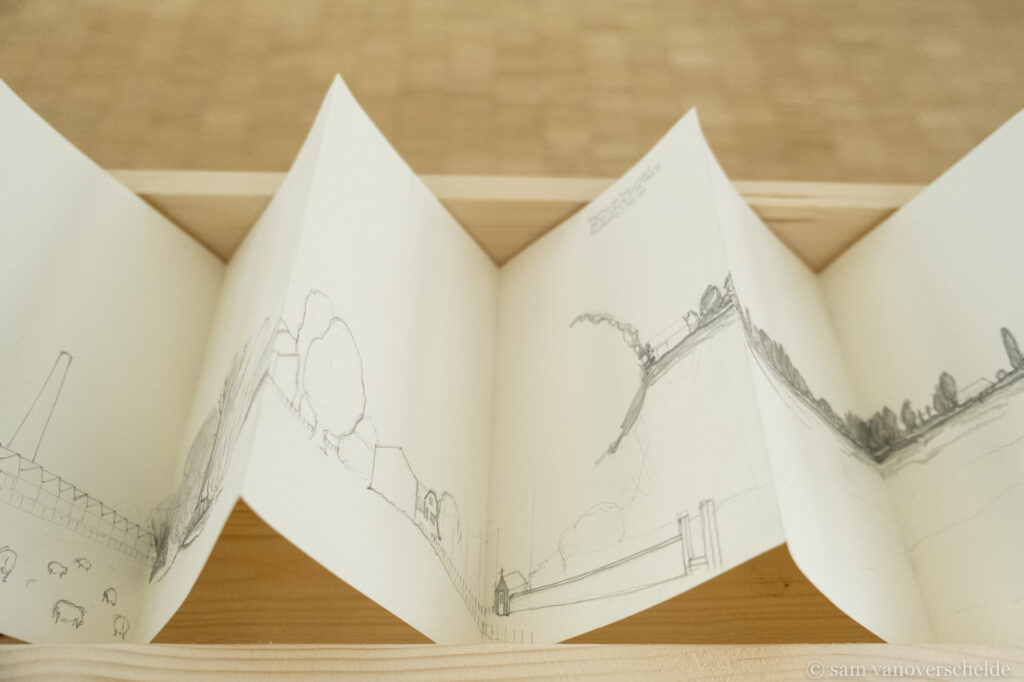
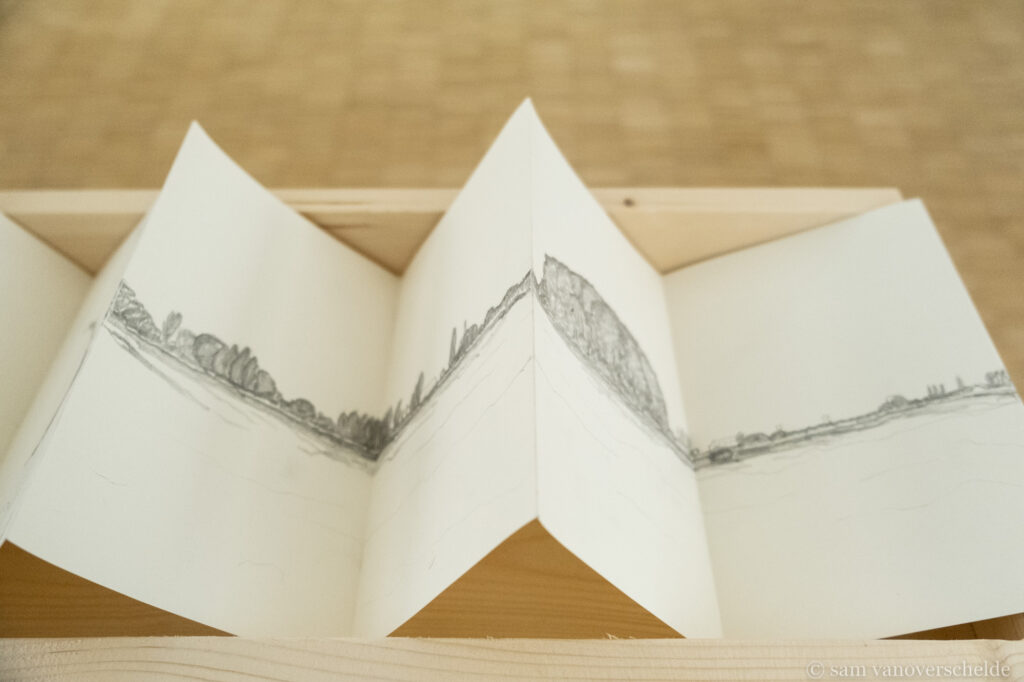
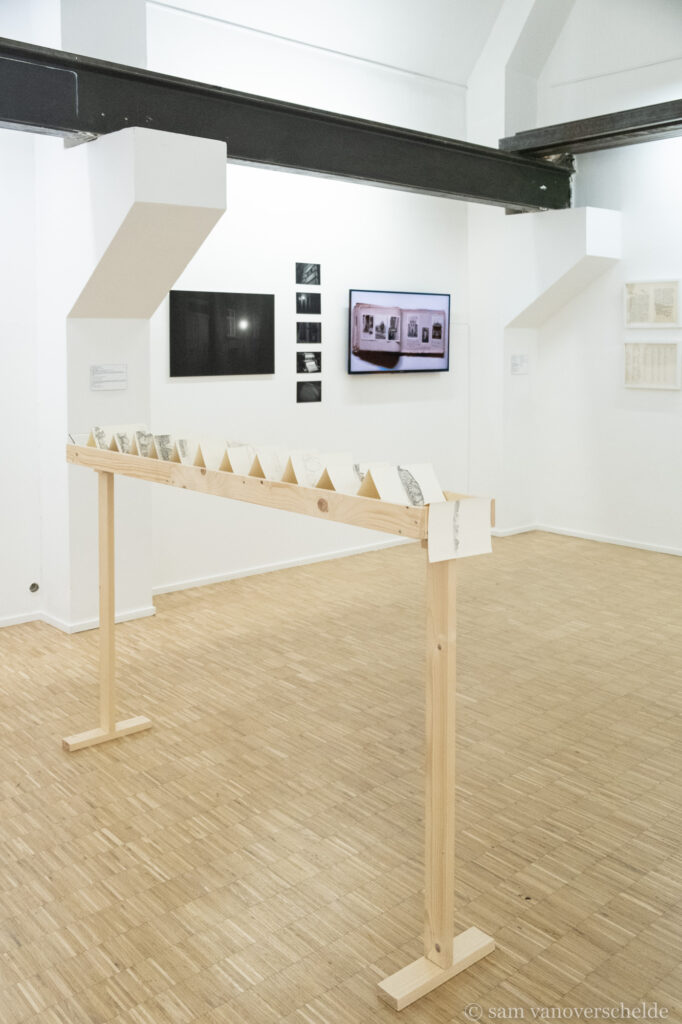
For the exhibition, with a group of 16 different artist each having their own output and collaborations, we presented our work as a common project: Philippe presented his personal work and 5 new portraits of our protagonists. Julian analysed and reworked a letter, in fourfold, of Molly English that she had sent during WWII to Kathleen Molloy, a relative in Waterford. He also presented four postcards – genuine WWI mail from soldiers to their family – he had erased to write a personal message to his grandfather. A third piece of his is a meticulous description of one of Philippes historical items: the doorknob of his great-grandfathers office. He also wrote a text on the wall as a reflection the common path we had walked.
My work consists of the sketchbook and the video called ‘The Field’
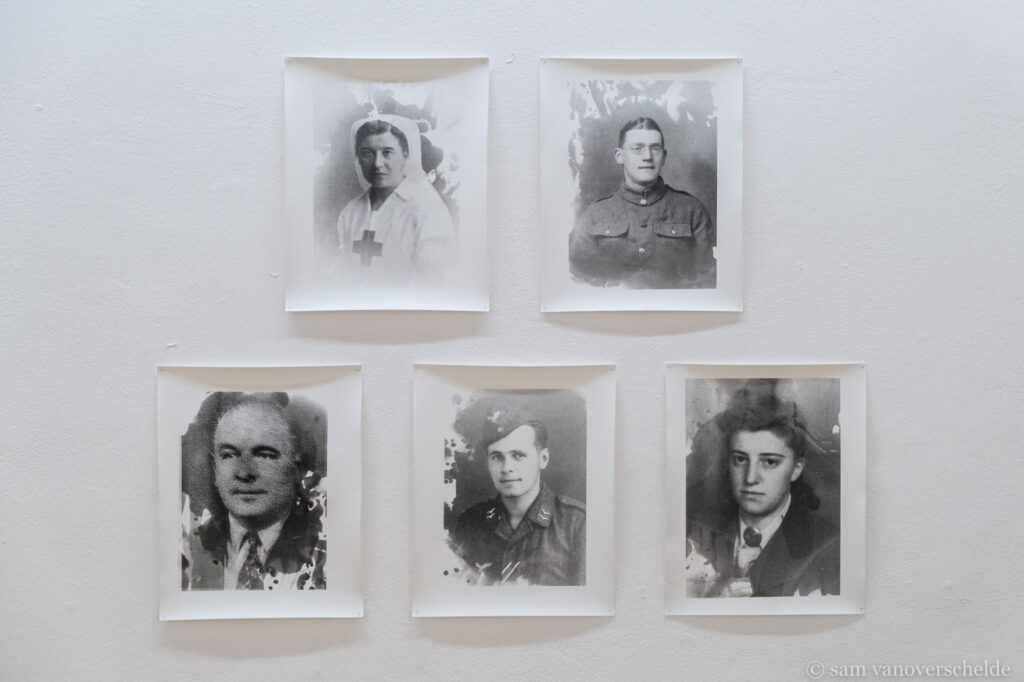
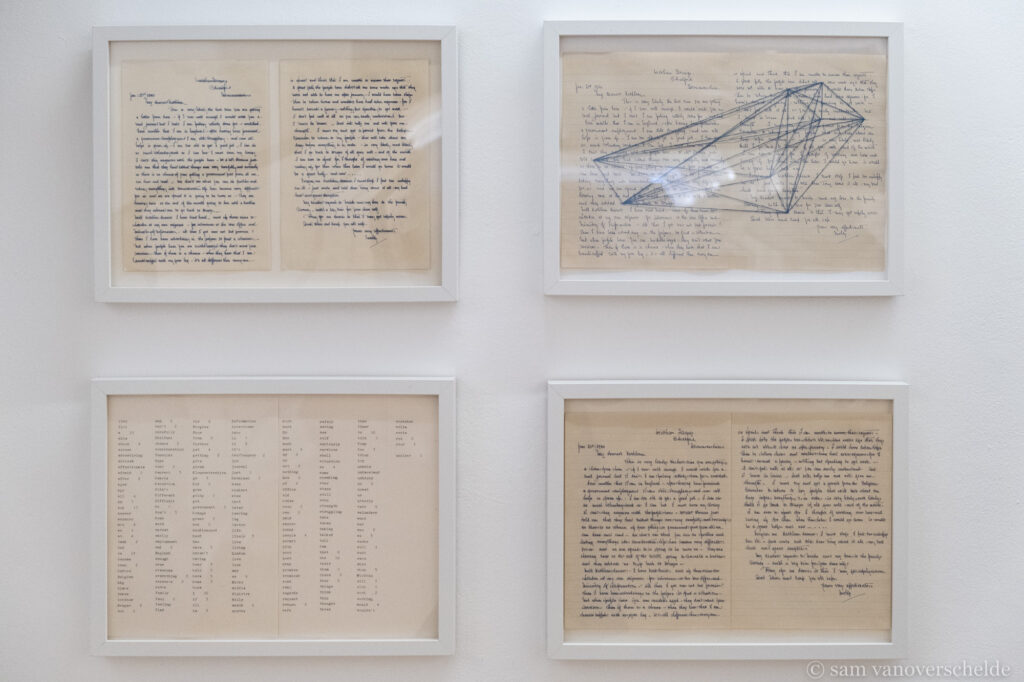
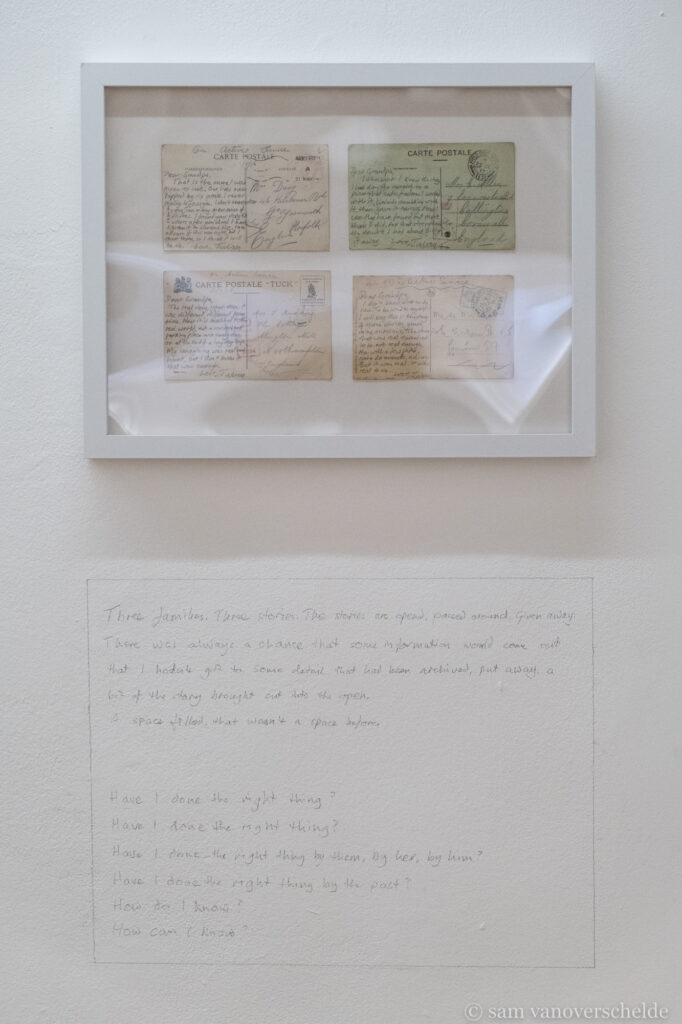
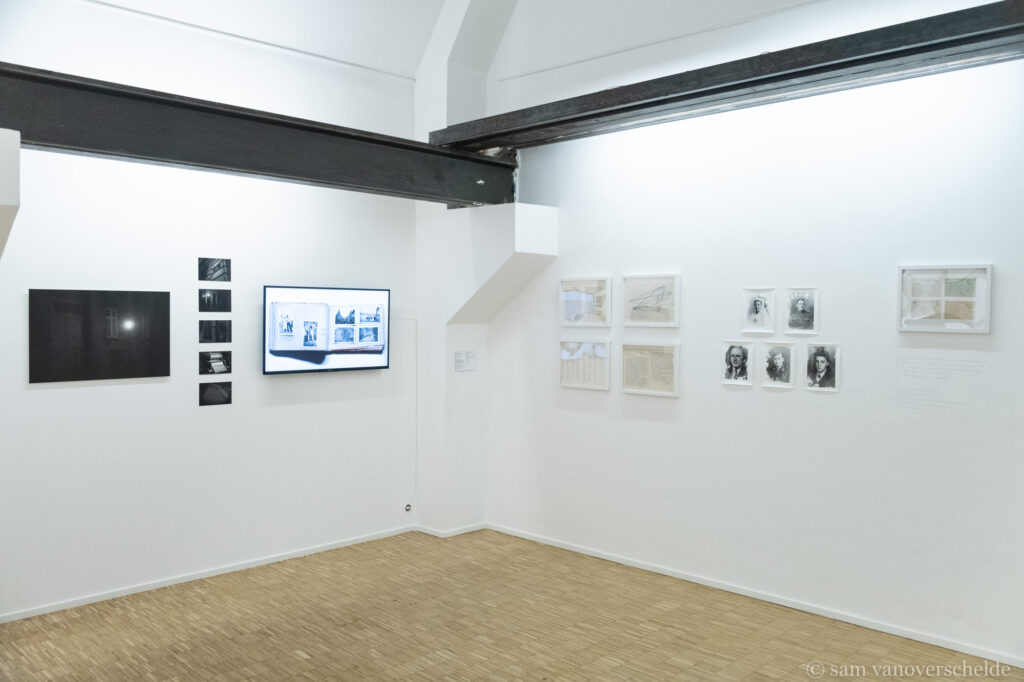
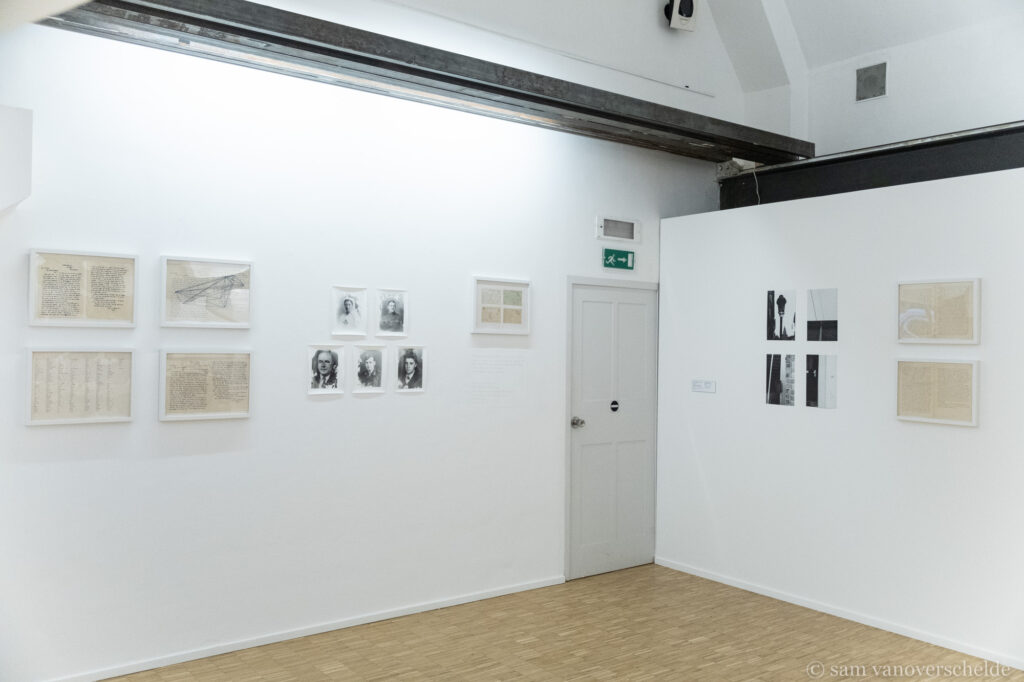
I was also in charge of the creation of the website for the group and the exhibition: http://fictivearchiveinvestigations.com/
Together with Yves Geunes, we created an interface to browse alternatively through the archive that is our groups ever expanding body of work: the Fictive Archive Investigations…
